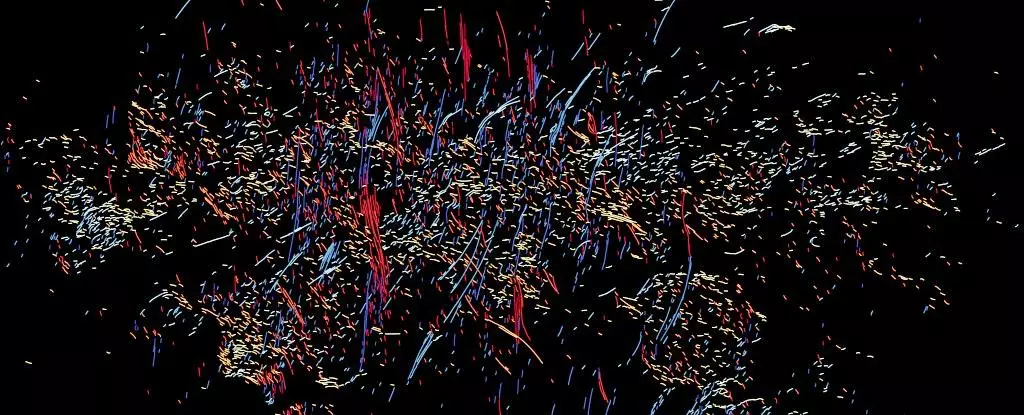A new population of filaments has been discovered in the space surrounding the heart of the Milky Way. These magnetized strands are aligned along the galactic plane and point towards the galactic center. According to astrophysicist Farhad Yusef-Zadeh of Northwestern University, these filaments are likely the remnants of an outflow from the supermassive black hole Sagittarius A* which interacted with the surrounding gas a few million years ago. The discovery of these filaments suggests that our galaxy’s center has been active recently. The new population of filaments is more like dashes than lines, with hundreds of structures around 5 to 10 light-years in length, and laying horizontally along the galactic plane. These filaments are a lot shorter than the previously discovered vertical ones, which were up to around 150 light-years in length.
The Implications
The discovery of these filaments provides new insights into the dynamics of the center of the Milky Way. The vertical filaments discovered in the 1980s could have been the result of winds gusting from an active supermassive black hole or turbulence in the intergalactic medium, stirred by the motion of galaxies. The newly discovered horizontal filaments, on the other hand, appear to emit thermal radiation and are radially arranged just on one side of the galactic center, pointing back towards Sgr A*. This radial arrangement seems linked to the orientation of Sgr A* and appears to point at a radial outflow driven by the astrophysical jets that erupt from around a black hole when it is actively accreting material.
The newly discovered filaments could provide useful information about the black hole’s spin and accretion disk orientation. The vertical filaments accelerate particles to near light speed, while the newly discovered horizontal filaments appear to emit thermal radiation. Analysis of the extent and position of the filaments suggests that this took place around 6 million years ago. The discovery of these filaments adds to the growing body of evidence that our galaxy’s center is far wilder and woolier than we had previously thought.
“We have always been thinking about vertical filaments and their origin,” says Yusef-Zadeh. “I’m used to them being vertical. I never considered there might be others along the plane. It is satisfying when one finds order in the middle of a chaotic field of the nucleus of our galaxy.”
Yusef-Zadeh and his team discovered the new population of filaments in data collected by the MeerKAT radio telescope in South Africa. The team was cleaning up the data, removing the background to make the vertical filaments more visible when they discovered the new population of galactic ‘harp strings.’ The discovery of these new filaments suggests that there may be more fascinating secrets lurking within the center of our galaxy.
“Our work is never complete,” Yusif-Zadeh adds. “We always need to make new observations and continually challenge our ideas and tighten up our analysis.” As new structures continue to emerge, we are far from knowing the complete history and dynamics of the center of our Milky Way.


Leave a Reply